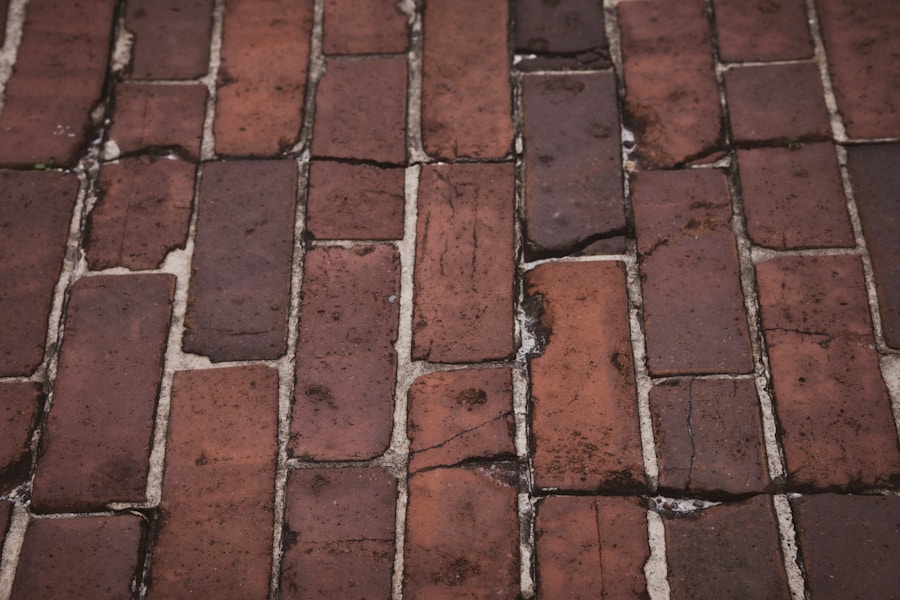Faded and cracked asphalt is a common issue that plagues many roadways and parking lots. Over time, exposure to the elements, heavy traffic, and the weight of vehicles can cause the asphalt to deteriorate, resulting in a faded appearance and unsightly cracks. This not only detracts from the overall aesthetic of the area but also poses a safety hazard for drivers and pedestrians. The faded lines and markings can lead to confusion and accidents, while the cracks can cause damage to vehicles and create tripping hazards for pedestrians.
One of the main causes of faded and cracked asphalt is the natural aging process. As asphalt ages, it becomes more susceptible to damage from UV rays, moisture, and temperature fluctuations. This can cause the asphalt to lose its flexibility and become brittle, leading to cracks and fading. In addition, heavy traffic and the weight of vehicles can put stress on the asphalt, causing it to crack and deteriorate over time. Without proper maintenance and repairs, faded and cracked asphalt can become a major liability for property owners and municipalities.
Another factor that contributes to faded and cracked asphalt is poor installation and subpar materials. If the asphalt was not properly installed or if low-quality materials were used, it is more likely to deteriorate and develop issues such as fading and cracking. Inadequate drainage can also exacerbate the problem, as standing water can weaken the asphalt and lead to cracks and deterioration. To address these issues, it is important to invest in high-quality materials and proper installation techniques, as well as regular maintenance and repairs to prevent further deterioration.
Potholes and Uneven Surfaces
Potholes and uneven surfaces are a common problem on many roadways and parking lots, causing frustration for drivers and posing a safety hazard for vehicles and pedestrians. Potholes are typically caused by the expansion and contraction of water under the pavement, which weakens the asphalt and creates voids that eventually collapse under the weight of vehicles. Uneven surfaces can be caused by a variety of factors, including poor installation, heavy traffic, and natural settling of the ground beneath the pavement.
Potholes are not only unsightly but can also cause significant damage to vehicles, leading to costly repairs for drivers. In addition, they can pose a safety hazard for pedestrians, especially if they are hidden by standing water or debris. Uneven surfaces can also be dangerous, as they can cause vehicles to lose control or create tripping hazards for pedestrians. To address these issues, it is important to invest in regular maintenance and repairs to fill potholes and level uneven surfaces.
One of the main causes of potholes and uneven surfaces is poor drainage. If water is allowed to pool on the pavement, it can weaken the asphalt and create voids that eventually collapse under the weight of vehicles. In addition, poor installation techniques and subpar materials can also contribute to these issues, as they can lead to premature deterioration and settling of the pavement. To prevent potholes and uneven surfaces, it is important to invest in proper drainage systems, high-quality materials, and professional installation techniques.
Drainage Issues
Drainage issues are a common problem that can lead to a variety of pavement problems, including potholes, uneven surfaces, and deterioration. Poor drainage can cause water to pool on the pavement, weakening the asphalt and creating voids that eventually collapse under the weight of vehicles. This can lead to potholes and uneven surfaces, as well as accelerated deterioration of the pavement. In addition, standing water can also create safety hazards for drivers and pedestrians, as it can hide potholes and create slippery conditions.
One of the main causes of drainage issues is inadequate or poorly designed drainage systems. If the pavement does not have proper drainage in place, water can pool on the surface, leading to deterioration and other problems. In addition, natural settling of the ground beneath the pavement can also contribute to drainage issues, as it can create low spots where water can collect. To address these issues, it is important to invest in proper drainage systems that will effectively channel water away from the pavement.
Another factor that contributes to drainage issues is poor maintenance. If drainage systems are not properly maintained, they can become clogged with debris or sediment, leading to standing water on the pavement. In addition, if potholes are not promptly repaired, they can collect water and exacerbate drainage issues. To prevent these problems, it is important to invest in regular maintenance and repairs to keep drainage systems clear and functioning properly.
Warped or Buckled Pavement
Warped or buckled pavement is a common issue that can be caused by a variety of factors, including poor installation, heavy traffic, and natural settling of the ground beneath the pavement. Warped or buckled pavement not only detracts from the overall aesthetic of an area but also poses a safety hazard for drivers and pedestrians. The uneven surfaces can cause vehicles to lose control or create tripping hazards for pedestrians, leading to accidents and injuries.
One of the main causes of warped or buckled pavement is natural settling of the ground beneath the pavement. Over time, the ground beneath the pavement can shift and settle, leading to uneven surfaces and warped or buckled pavement. In addition, heavy traffic can put stress on the pavement, causing it to warp or buckle over time. To address these issues, it is important to invest in proper installation techniques that will minimize settling and ensure a level surface.
Another factor that contributes to warped or buckled pavement is poor maintenance. If potholes are not promptly repaired, they can collect water and exacerbate drainage issues, leading to accelerated deterioration of the pavement. In addition, if drainage systems are not properly maintained, they can become clogged with debris or sediment, leading to standing water on the pavement. To prevent these problems, it is important to invest in regular maintenance and repairs to keep drainage systems clear and functioning properly.
Aging and Deteriorating Appearance
Aging and deteriorating appearance is a common issue that plagues many roadways and parking lots. Over time, exposure to the elements, heavy traffic, and the weight of vehicles can cause the asphalt to deteriorate, resulting in a faded appearance, cracks, potholes, uneven surfaces, and warped or buckled pavement. This not only detracts from the overall aesthetic of an area but also poses a safety hazard for drivers and pedestrians.
One of the main causes of aging and deteriorating appearance is natural aging process. As asphalt ages, it becomes more susceptible to damage from UV rays, moisture, temperature fluctuations which leads to cracks potholes uneven surfaces warped or buckled pavement . This can cause the asphalt to lose its flexibility and become brittle leading to cracks potholes uneven surfaces warped or buckled pavement . In addition heavy traffic puts stress on the asphalt causing it to crack potholes uneven surfaces warped or buckled pavement . Without proper maintenance repairs aging deteriorating appearance can become a major liability for property owners municipalities.
Another factor that contributes to aging deteriorating appearance is poor installation subpar materials inadequate drainage poor maintenance . If the asphalt was not properly installed or if low-quality materials were used it is more likely to deteriorate develop issues such as fading cracking potholes uneven surfaces warped or buckled pavement . Inadequate drainage exacerbates problem standing water weakens asphalt leads cracks deterioration . To address these issues it is important invest high-quality materials proper installation techniques regular maintenance repairs prevent further deterioration aging deteriorating appearance .

